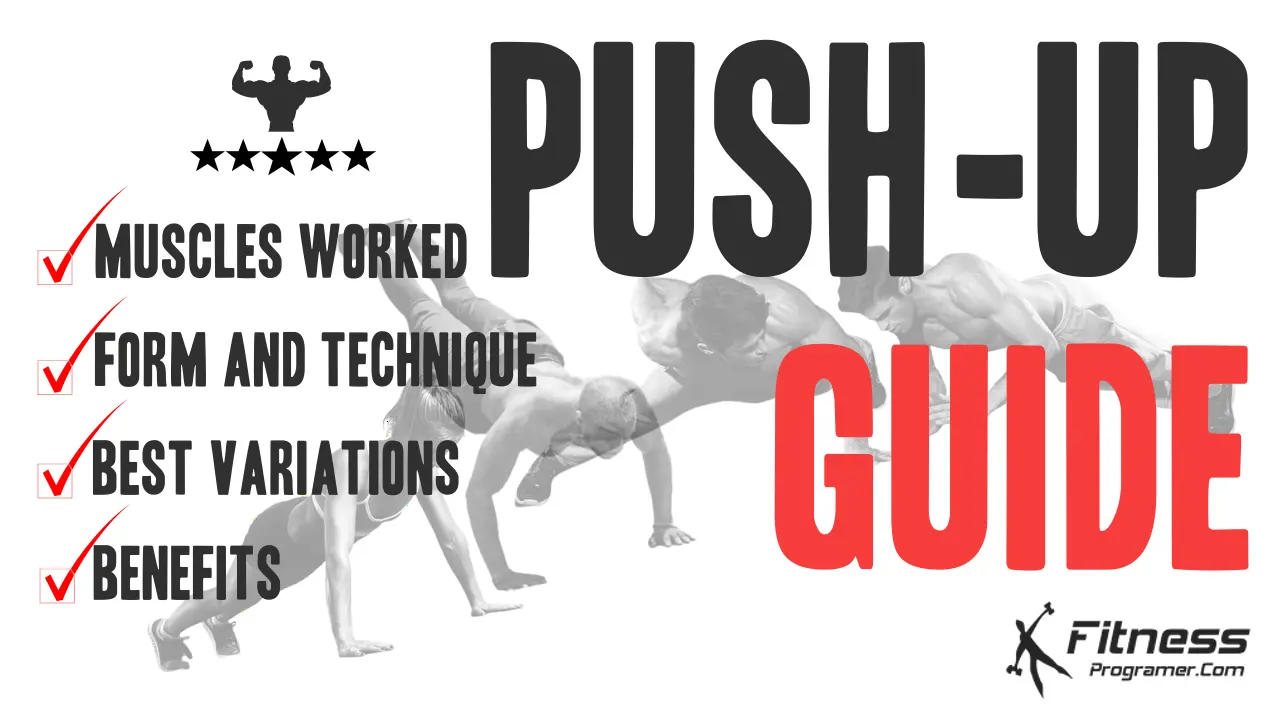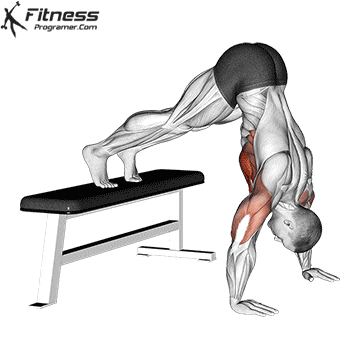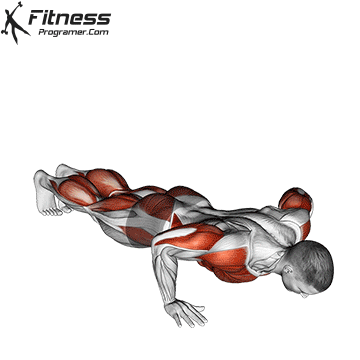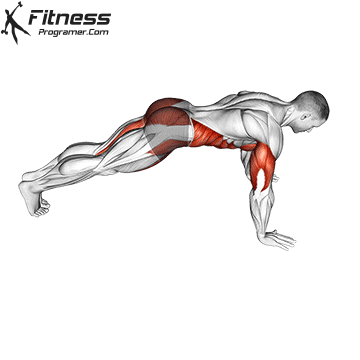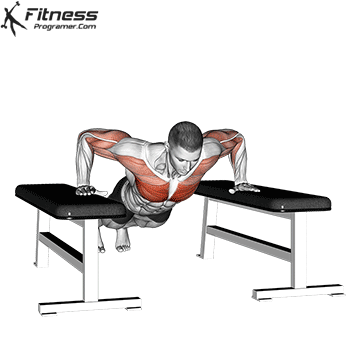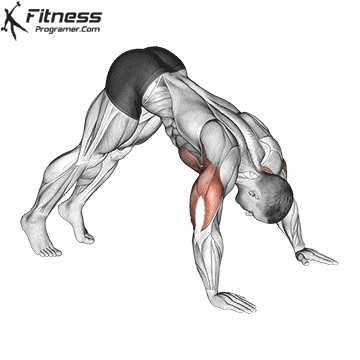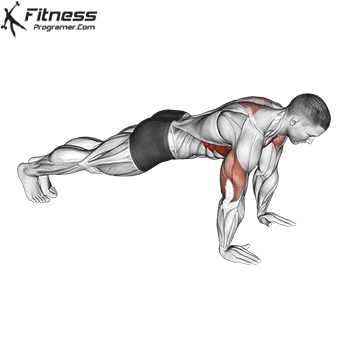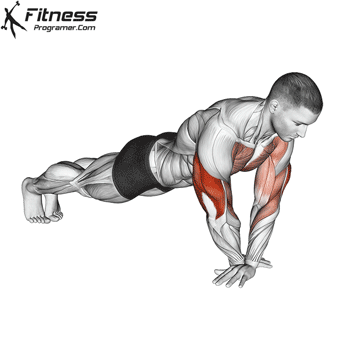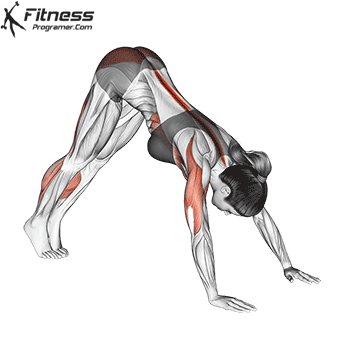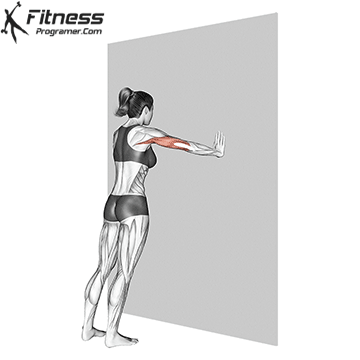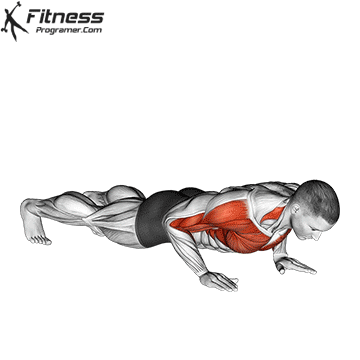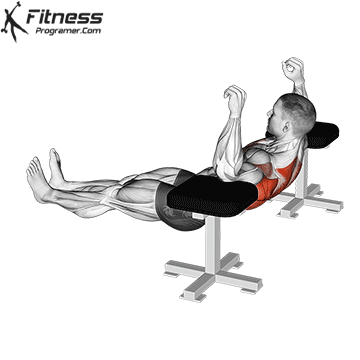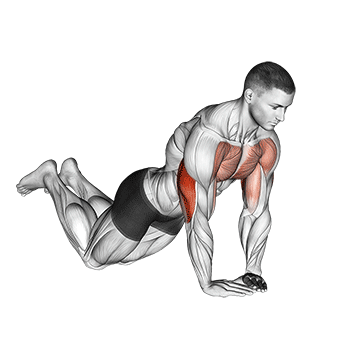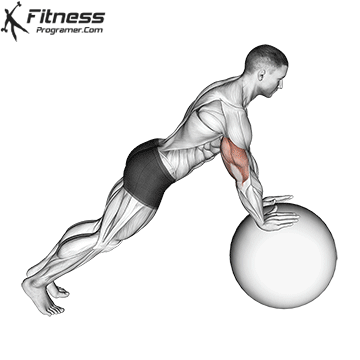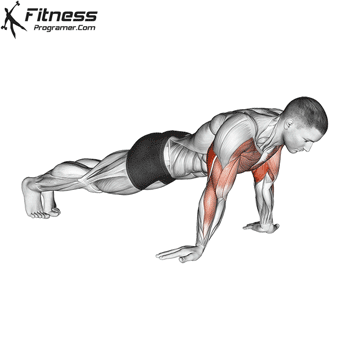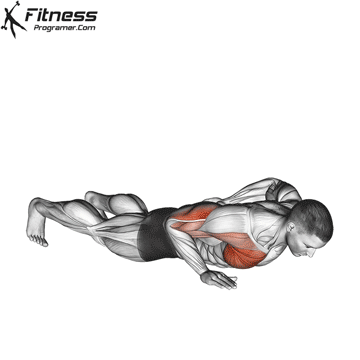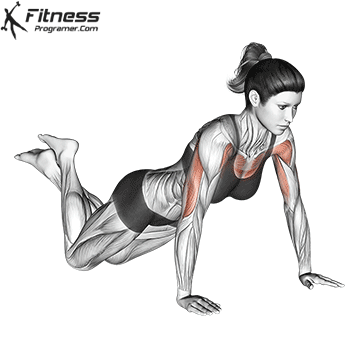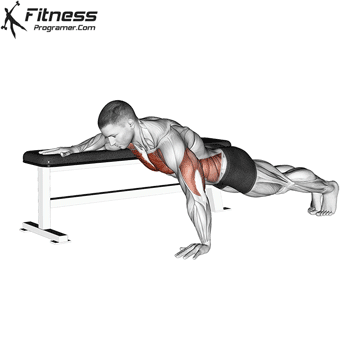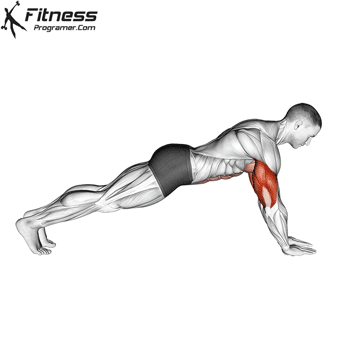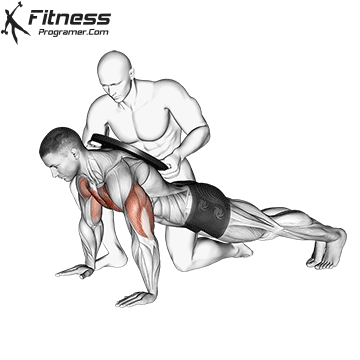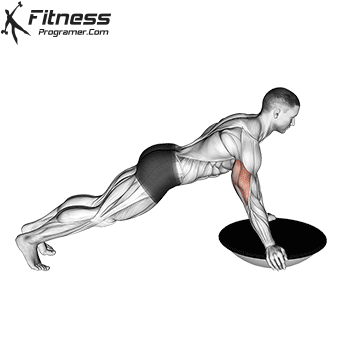Contents
- Perfect Push-Up Form:
- Common Mistakes to Avoid:
- Muscles Worked in a Standard Push-up
- 5 important benefits of push-ups
- Create a Comprehensive Push-Up Routine
- Push-up Variations
- Diamond Push-up
- Bench Pike Push-up
- Push-up Toe Touch
- Cross Body Push-up
- Drop Push-Up
- Decline Push-up
- Pike Push-up
- Push-Up Plus
- Cross Arm Push-up
- Hindu Push-ups
- Wall Push-up
- Clap Push-Up
- Elbow Reverse Push-Up
- Kneeling Diamond Push-Up
- Incline Push-up
- Stability Ball Decline Push-Up
- Stability Ball Push-Up
- Reverse Push-up
- Single-Arm Push-up
- Kneeling Push-up
- One Arm Push Ups With Support
- Forearm Push-up
- Weighted Push-up
- Bosu Ball Push-Up
Push-up are a compound exercise that is usually done at body weight and provides strength building. When the push-up is done correctly, it works the pectoral muscles, triceps and shoulder muscles. It also provides the work of all muscle groups focused on balance, core strength, cardio endurance, mobility and flexibility. Because push-ups are a functional exercise, they are part of basic strength training used in physical education and the military. Aren’t these enough to be an indicator of how effective push-ups are in every field? Then let’s continue..
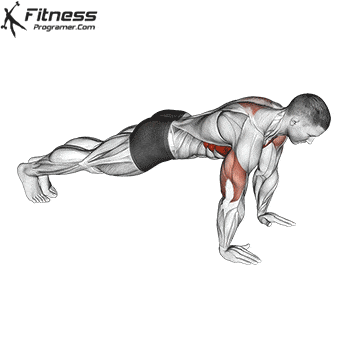
Perfect Push-Up Form:
Starting Position:
- Begin in a plank position with your hands placed slightly wider than shoulder-width apart.
- Keep your wrists aligned with your shoulders and your fingers pointing forward or slightly outward.
- Engage your core and maintain a straight line from your head to your heels. Avoid sagging your hips or arching your back.
Execution:
- Lower your body by bending your elbows while keeping them close to your torso.
- Lower yourself until your chest is about an inch above the ground or as far as your strength allows.
- Ensure that your body moves as a single unit; don’t let your hips sag.
- Push through your palms to extend your elbows and return to the starting position.
- Fully extend your arms without locking your elbows.
Breathing:
- Inhale as you lower your body.
- Exhale as you push yourself back up.
Common Mistakes to Avoid:
Sagging Hips: Keep your body in a straight line from head to heels. Don’t let your hips dip or rise too high.
Elbows Flaring Out: Keep your elbows close to your body to protect your shoulders.
Incomplete Range of Motion: Lower your body until your chest is close to the ground. Going only halfway won’t give you the full benefits.
Improper Hand Placement: Hands should be aligned with your shoulders, not too wide or too narrow.
Muscles Worked in a Standard Push-up
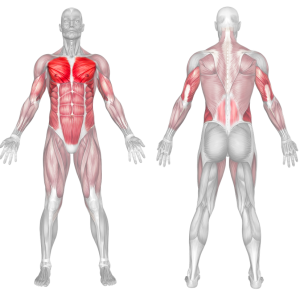
5 important benefits of push-ups
1. Full-Body Engagement:
While push-ups primarily work the upper body, they also engage various muscle groups throughout the body. For example, the back muscles are involved in maintaining a stable posture, and leg muscles contribute to overall stability. This comprehensive engagement makes push-ups an effective full-body exercise.
2. Muscle Engagement:
When performed correctly, push-ups primarily target the pectoral muscles (chest), triceps (back of the arms), and the deltoid muscles (shoulders). This engagement helps build both upper body strength and muscle definition. Beyond the primary muscle groups, push-ups engage various other muscles to maintain balance and stability. This includes the core muscles, which help stabilize the spine and pelvis, as well as the back, which assists in maintaining proper posture.
3. Cardio Endurance:
Performing push-ups at a faster pace or in high repetitions can quickly elevate your heart rate. This increased heart rate is a key component of cardiovascular training, as it helps improve the efficiency of your cardiovascular system, including your heart and lungs. Push-ups can be performed in high repetitions or as part of a circuit training routine, making them an effective way to improve cardiovascular endurance when done at a faster pace.
4. Functional Exercise:
Push-ups simulate pushing movements commonly encountered in everyday life, making them a functional exercise. This means that the strength and skills gained from push-ups can be directly applied to real-life situations, which is valuable in physical education and military training.
5. Muscle Endurance
Muscle endurance is the ability of a muscle or group of muscles to sustain a contraction over an extended period of time or to perform repeated contractions without fatigue. Push-ups require you to support your body weight for an extended duration during each repetition. This sustained effort places a significant demand on your muscles, contributing to improved endurance over time.
Given these advantages, it’s clear that push-ups are an effective and versatile exercise that can benefit individuals in various fields, from sports and fitness to military and physical education. They provide a well-rounded approach to building strength, endurance, and functional fitness.
Create a Comprehensive Push-Up Routine
As a beginner, it’s crucial to prioritize proper form and technique over the number of repetitions. Gradually progress in terms of both repetitions and difficulty levels as you become more comfortable with each variation. Additionally, listen to your body and adjust the workout intensity if needed to prevent overexertion or strain.
This routine provides a well-rounded introduction to push-up training and allows you to progressively build strength and endurance while incorporating various push-up variations. Adjust the number of sets and repetitions as needed based on your fitness level and how challenging the workout feels for you.
Here’s an example of a beginner’s routine:
- 5-10 minutes of light cardio (e.g., jogging in place or jumping jacks)
- Dynamic stretches for the upper body, including arm circles and shoulder rolls
Push-up Workout Routine:
Set 1: Standard Push-Ups

- 2 sets of 12-15 repetitions
- Rest for 30-60 seconds between sets
- Focus on maintaining proper form throughout each set
- If you can’t complete the desired number of repetitions with good form, perform as many as you can and gradually work your way up to the target range
Set 2: Incline Push-Up

- 2 sets of 12-15 repetitions
- Rest for 30-60 seconds between sets
- Place your hands on an elevated surface (e.g., a bench or step) to make the exercise slightly easier than standard push-ups
Set 3: Decline Push-Up

- 2 sets of 12-15 repetitions
- Rest for 30-60 seconds between sets
- Elevate your feet on a stable surface (e.g., a bench or step) to increase the difficulty
Stretch the chest, shoulders, triceps, and upper back muscles to enhance flexibility and aid recovery
Push-up Variations
Push-ups offer a wide range of variations, as previously discussed, which allow you to target different muscle groups and add diversity to your workout routine. This versatility helps prevent plateaus and keeps your workouts interesting.

